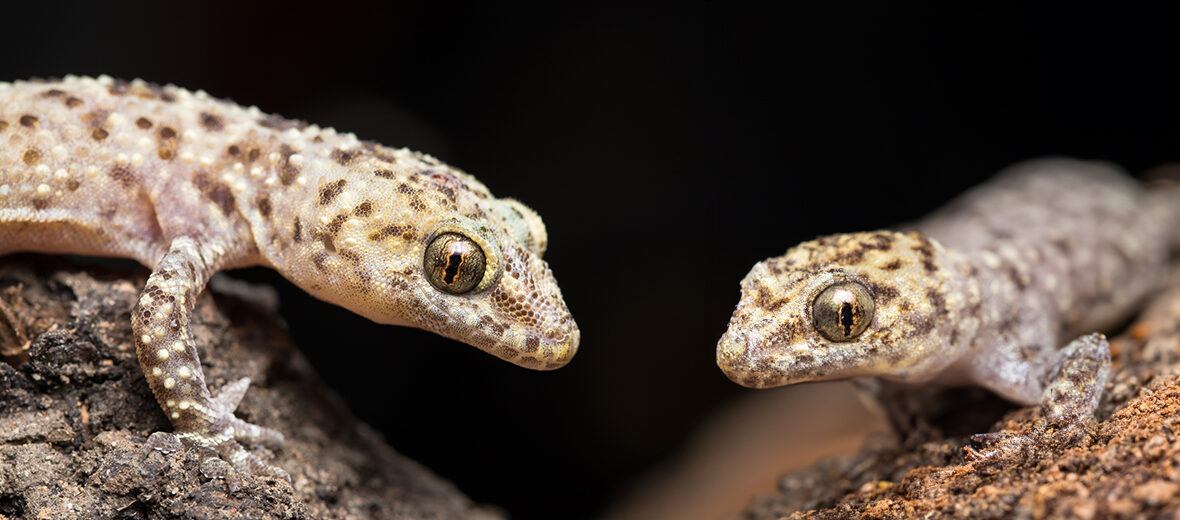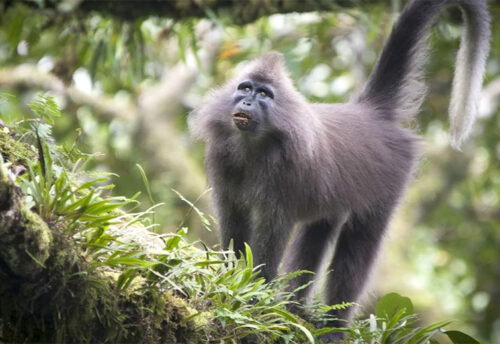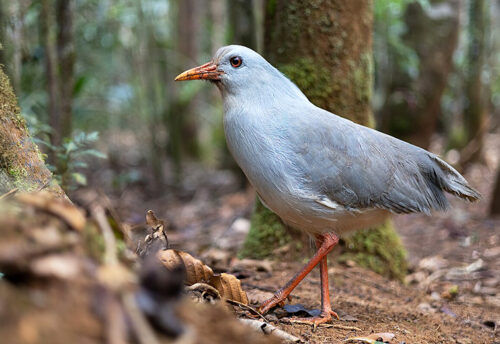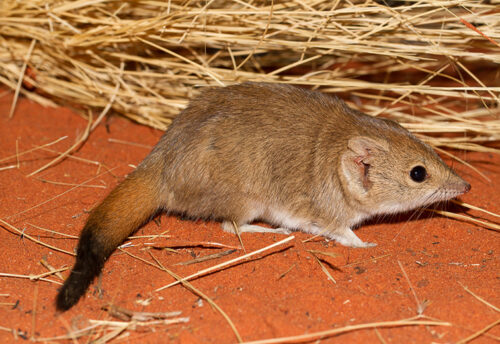
The Mediterranean house gecko, aka Turkish gecko or moon lizard, is a small gecko species with a wide distribution. They can be found throughout southern Europe, Africa, western Asia, the Middle East, throughout southern United States, Hawaii, and into Mexico. They face the threats of over collection for the pet trade and some persecution in tourist resorts, but overall that doesn’t seem to have an impact on their growing numbers. The IUCN lists these lizards as Least Concern.
First the Stats…
Scientific name: Hemidactylus turcicus
Weight: Up to .020 ounce
Length: Up to 5.9 inches
Lifespan: Up to 9 years
Now on to the Facts!
1.) Their eyes are large and lidless, and they have elliptical pupils.
2.) These geckos are totally nocturnal (active at night).
3.) They brumate (hibernation for reptiles) in the colder winter months usually in the walls of buildings or under debris piles.
4.) The introduction of these geckos’ impact on wildlife has not been studied and is uncertain.
5.) Harming these geckos is considered taboo, due to their calm and almost friendly demeanor.
But wait, there’s more on the Mediterranean house gecko!
6.) In the southern United States, these critters are often seen perched on walls and ceilings of porches, hunting insects that are drawn to porch lights (positively phototactic).
7.) I actually intentionally leave my porch lights on all night in order to draw insects to these little geckos, throughout the summer months, so they can store energy for brumation in winter.
Did you know…?
Turkish house geckos tend to be rather resistant to pesticides used to kill insects.
8.) The digits vary in length, with the inner always rather developed; 6 – 8 lamellae (skin plates) are located under the inner digits, 8 – 10 are under the 4th finger, and 9 – 11 are under the 4th toe.
9.) Their skin is an almost purplish pink color, and is nearly translucent.
10.) Like other geckos, these critters are capable of caudal autonomy (they can drop their tail) in order to deter an attacker.
But wait, there’s still more on the Mediterranean house gecko!
11.) They are often seen in small groups of 5 or more.
12.) Being quite adaptable, they can be found in a wide range of habitats such as buildings, trash piles, rocky cliffs, caves, coastal regions, and shrublands.
Did you know…?
Juveniles tend to steer clear of adults, for fear of being bitten or even cannibalized. Although, this doesn’t often happen.
13.) Like other geckos, these critters can produce sound if threatened or captured. They produce a distinctive, high-pitched call a bit like a squeak or the chirp of a bird. Juveniles either lack this ability or their call is so faint it isn’t audible.
14.) They prey on a wide variety of crawling and flying insects, such as cockroaches, moths, gnats, spiders, butterflies, isopods, snails, and more.
15.) House geckos display copulatory biting (where the male will bite the female to restrain her during reproduction efforts), with stronger bites resulting in a higher fertilization success rate.
But wait, there’s still a little more on the Mediterranean house gecko!
16.) Fertilization is internal and the female will lay 2 eggs every 40 – 60 days, throughout the spring and summer months.
17.) Females can undergo delayed fertilization, aka delayed implantation, and can store sperm in a funnel-shaped organ called the infundibulum for up to 5 months. This comes in handy if they reproduce late in the summer, before fall comes, and then have to brumate.
18.) It has been documented that females can also reproduce via parthenogenesis. This is the reproduction without a male’s fertilization. Typically, parthenogenetic reproduction yields only females.
19.) Large spiders, whip scorpions, cats, bats, Cuban tree frogs, dogs, and owls all prey on these critters.
Now a Short Mediterranean House Gecko Video!
Be sure to share & comment below! Also, check out the Critter Science YouTube channel. Videos added regularly!
Want to suggest a critter for me to write about? Let me know here.
Some source material acquired from: Wikipedia & IUCN
Photo credit: Konstantinos Kalaentzis




